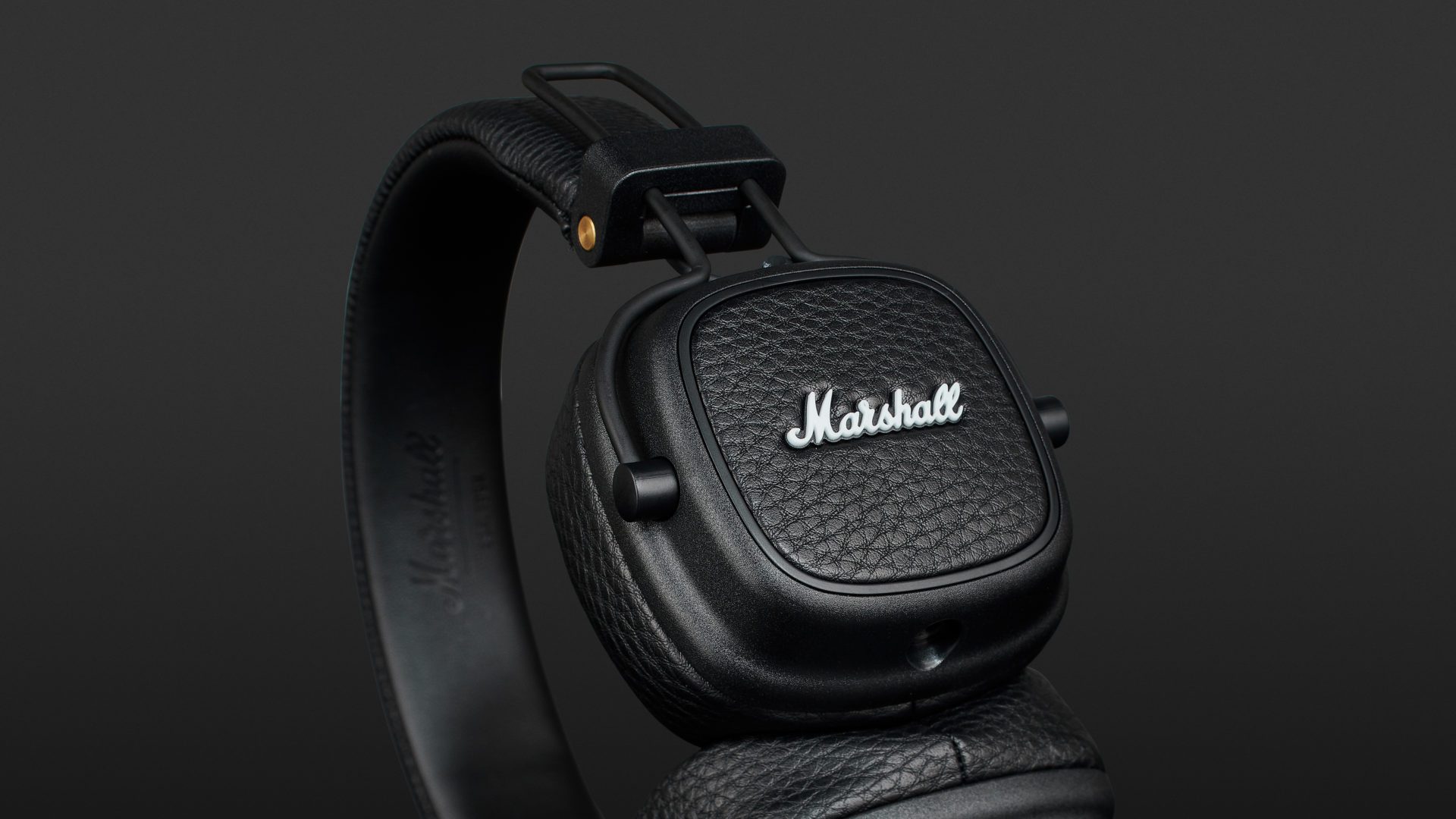At 69 euros, the wired Marshall Major III is around 50 euros cheaper than the new Bluetooth variant of Marshall. The headphone is robust, suitable for everyday use in its functionality, and comfortable to carry. Regarding the powerful sound, I would have liked more volume reserves for the mobile mode and a bit more restraint in the altitude range. Due to this, fine details, incorruptible neutrality and fine-tuning dynamics should not be expected.
The Marshall Major is by no means just a legendary tube amplifier from the sixties, but is also an established on-ear headphone from the same manufacturer. It’s presented to us for this test in the wired third version. Visually, the equally lightweight and robust device is committed to the classic corporate outfit. All in black, with imitation leather on all outer surfaces and rectangular earcups/cushions, the Major III deliberately evokes memories of the famous 4 × 12 loudspeaker boxes, which still appear on almost every rock stage to this day.

Usage
There is little to criticise about the processing. The same applies to the comfortable and sufficiently tight fit of the headset, which turns out to be completely non-slip in daytime operation while providing passable mechanical sound insulation, all without leaking noise to the outside world. The earpieces sit stably on a size-adjustable, padded headband and are rotatable up and down. They can also be folded down for transport.
The handset is connected via a detachable spiral cable with angled, gold-plated 3.5 mm jack plug. An adapter for the larger 6.3 mm format, however, is not available. Integrated into the cable are a remote control and a microphone for telephone operation. With a single button, the music can be started and paused, calls can be received, voice control of the smartphone is possible, and it also allows for tracks to be skipped ahead with multiple clicks. In-line volume control, however, is also unavailable. Practically speaking, thanks to one-sided cable management, there is room for another jack on the second ear cup, to which a second headphone can be connected.
Sound Quality
Like the Bluetooth version of the Major III, the Cable version also provides a full sound from the start. The level reserves, however, are much lower, corresponding to the passive mode of the Bluetooth model. Due to the otherwise identical optics, it seems reasonable to assume that Marshall has just dispensed with the active electronics.
In any case, the dynamic 40 mm drivers deliver a punchy, slightly over-emphasised bass which is tonally traceable, quite tight, and audible down to the low end. The mids also create a basic warmth that gives the music further pleasantries at volume. Acoustic instruments such as pianos, guitars or vocals are well reproduced and vocals are easy to understand. Like its wireless big brother, the Major III still struggles with a slight hardship in the treble range, although sound reproduction sounds balanced, open, and crisp, especially in tougher genres with distorted guitars or in emphatically open mixes. At the same time, dynamics, the implementation of the stereo panorama, and the layout of the space are less pronounced than with more expensive competitors. While you get good results with pop, rock and EDM in mobile use, you should enjoy calmer genres such as classical and jazz better in a quiet environment, otherwise, the details go unheard. Thus, the Major III achieves passable suitability for everyday use but is certainly not designed for higher demands, which makes sense given its affordable price tag of just 69 euros. On the other hand, the transmission quality of the built-in microphone impresses with solid results in telephone calls.
Technical specifications
- Ear couplingOn-ear
- Typeclosed
- Transducer principledynamic
- Frequency response (headphones)20 - 20.000 Hz
- Impedance32,6 ohms
- Sound pressure level (SPL)93,01 dB
- Pressure averaged from big and small head525 g
- Weight with cable186 g
- Weight without cable160 g
- Cable length125 cm
What's in the box
- Cable with mini jack, microphone, and remote
















































Correcting the treble with a parametric equalizer on my iPhone, the sound is luscious, well-balanced, and the soundstage excellent. Quite the bargain.